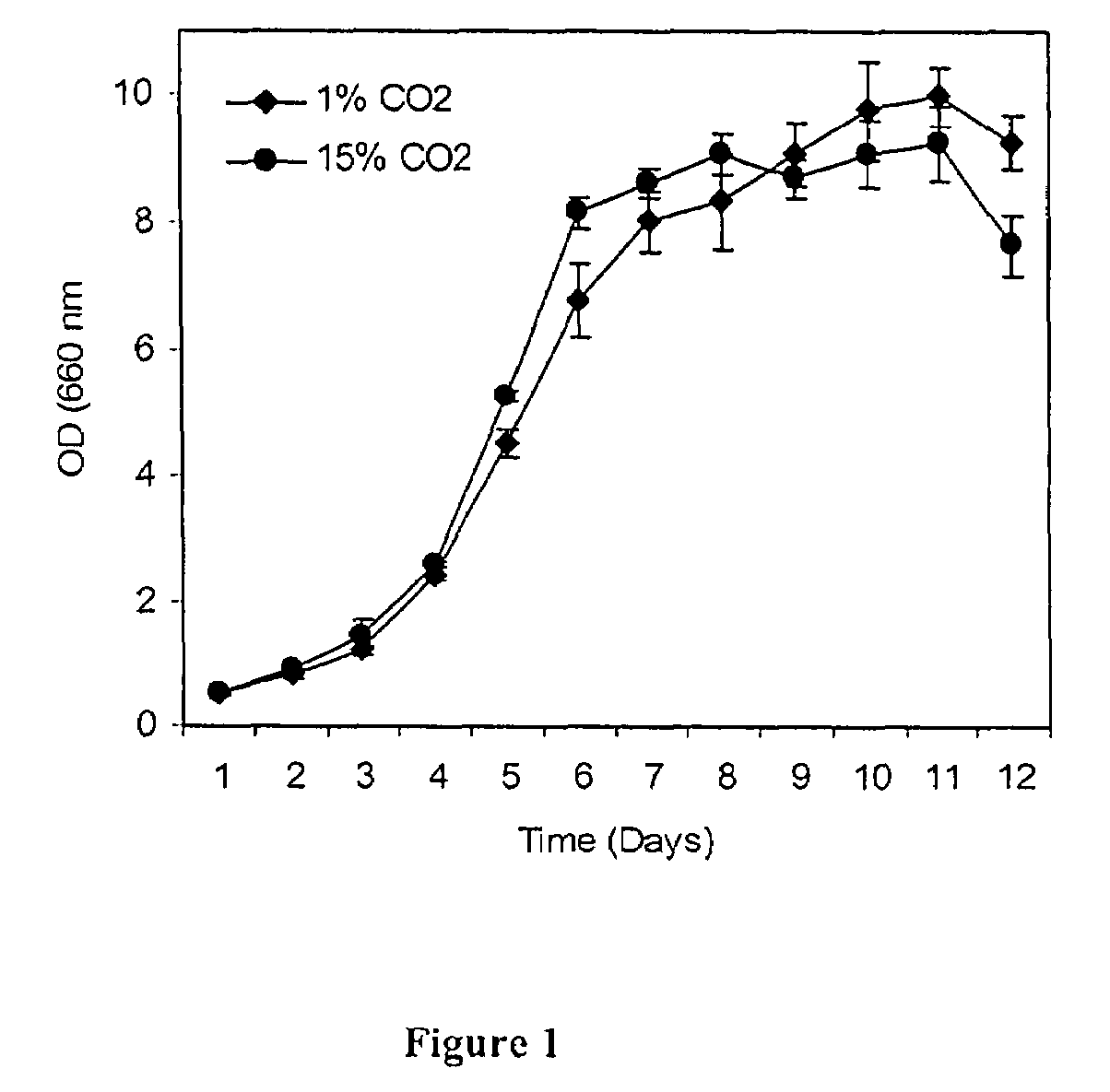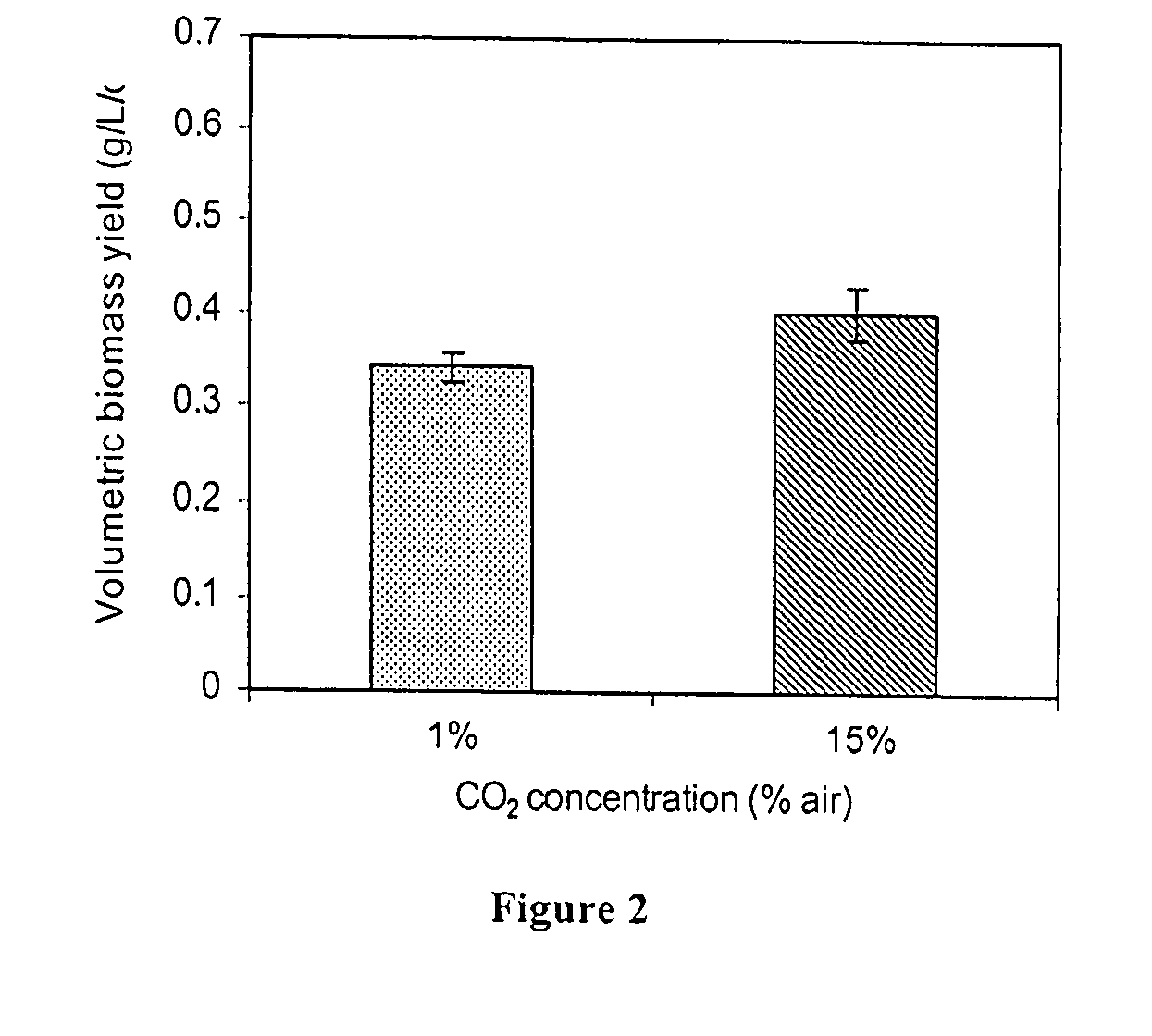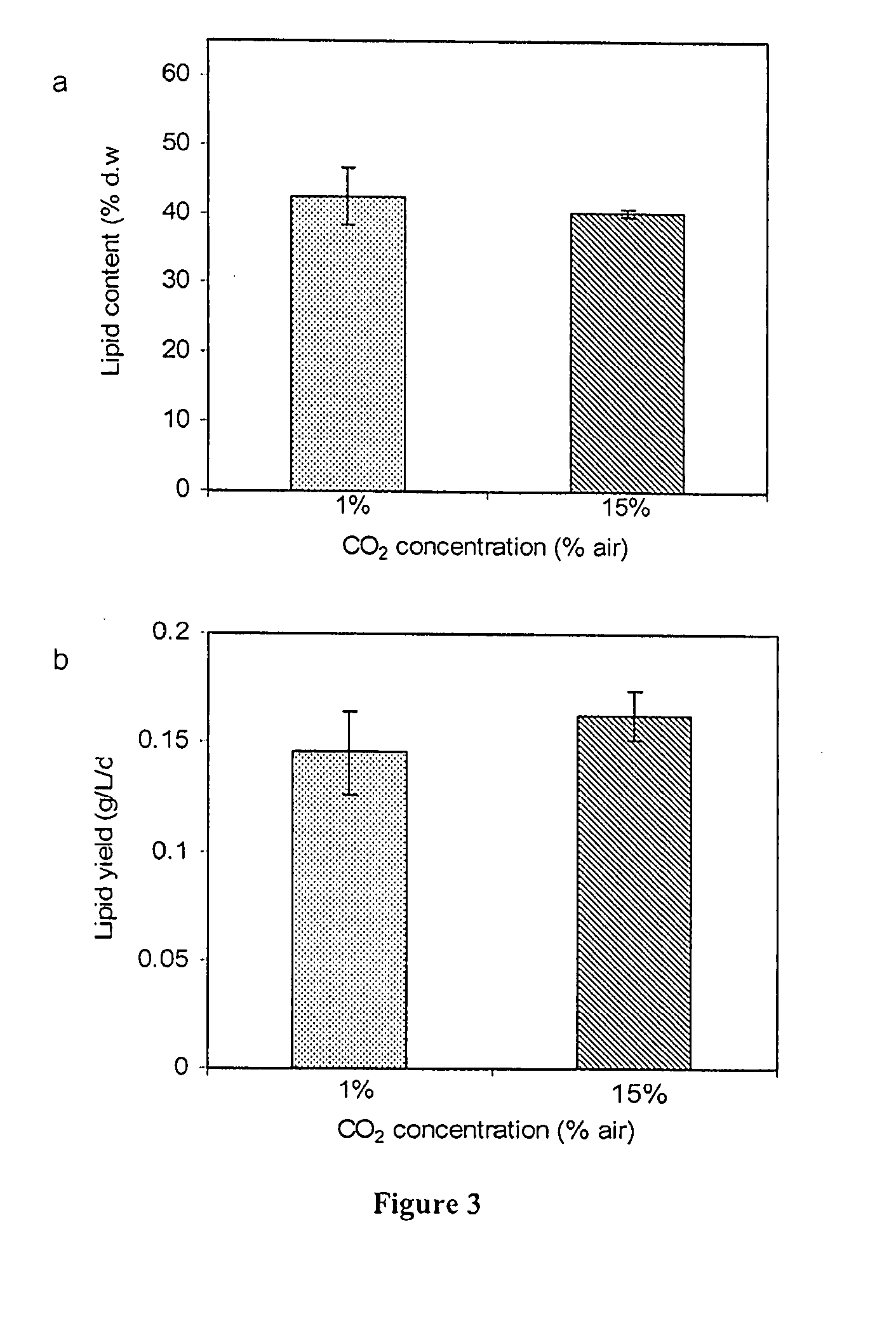Novel chlorella species and uses therefor
a technology of chlorella and chlorella spp., which is applied in the field of algae and algae selection methods, can solve the problems of high energy consumption, high cost of methods, and inability to meet the needs of the environment, and achieves the effects of reducing the number of algae, and increasing the number of alga
- Summary
- Abstract
- Description
- Claims
- Application Information
AI Technical Summary
Benefits of technology
Problems solved by technology
Method used
Image
Examples
examples
Materials and Methods
The Organism and Growth Conditions:
[0047]Starting algal cultures were obtained from a water environment in the Phoenix metropolitan area and maintained at 25° C. in BG-11 growth medium (Rippka, 1979).
Optical Density and Dry Weight Measurements:
[0048]Algal cell population density was measured daily using a micro-plate spectrophotometer (SPECTRA max 340 PC) and reported as optical density at 660 nm wave length. The dry weight of algal mass was determined by filtration from 10-20 ml culture through a pre-weighed Whatman GF / C filter. The filter with algae was dried at 105° C. overnight and cooled to the room temperature in a desiccator and weighed.
Chlorophyll Measurement:
[0049]A hot methanol extraction method was used (Azov (1982). The concentration was calculated using the Talling coefficient:
Chlorophyll a (mg / L)=13.9 (DO665−DO750) V / U
Where D0665=optical density measured at 665 nm wavelength, D0750=optical density measured at 750 nm wavelength, V=total volume of me...
PUM
| Property | Measurement | Unit |
|---|---|---|
| diameter | aaaaa | aaaaa |
| diameter | aaaaa | aaaaa |
| temperatures | aaaaa | aaaaa |
Abstract
Description
Claims
Application Information
 Login to View More
Login to View More - R&D
- Intellectual Property
- Life Sciences
- Materials
- Tech Scout
- Unparalleled Data Quality
- Higher Quality Content
- 60% Fewer Hallucinations
Browse by: Latest US Patents, China's latest patents, Technical Efficacy Thesaurus, Application Domain, Technology Topic, Popular Technical Reports.
© 2025 PatSnap. All rights reserved.Legal|Privacy policy|Modern Slavery Act Transparency Statement|Sitemap|About US| Contact US: help@patsnap.com



